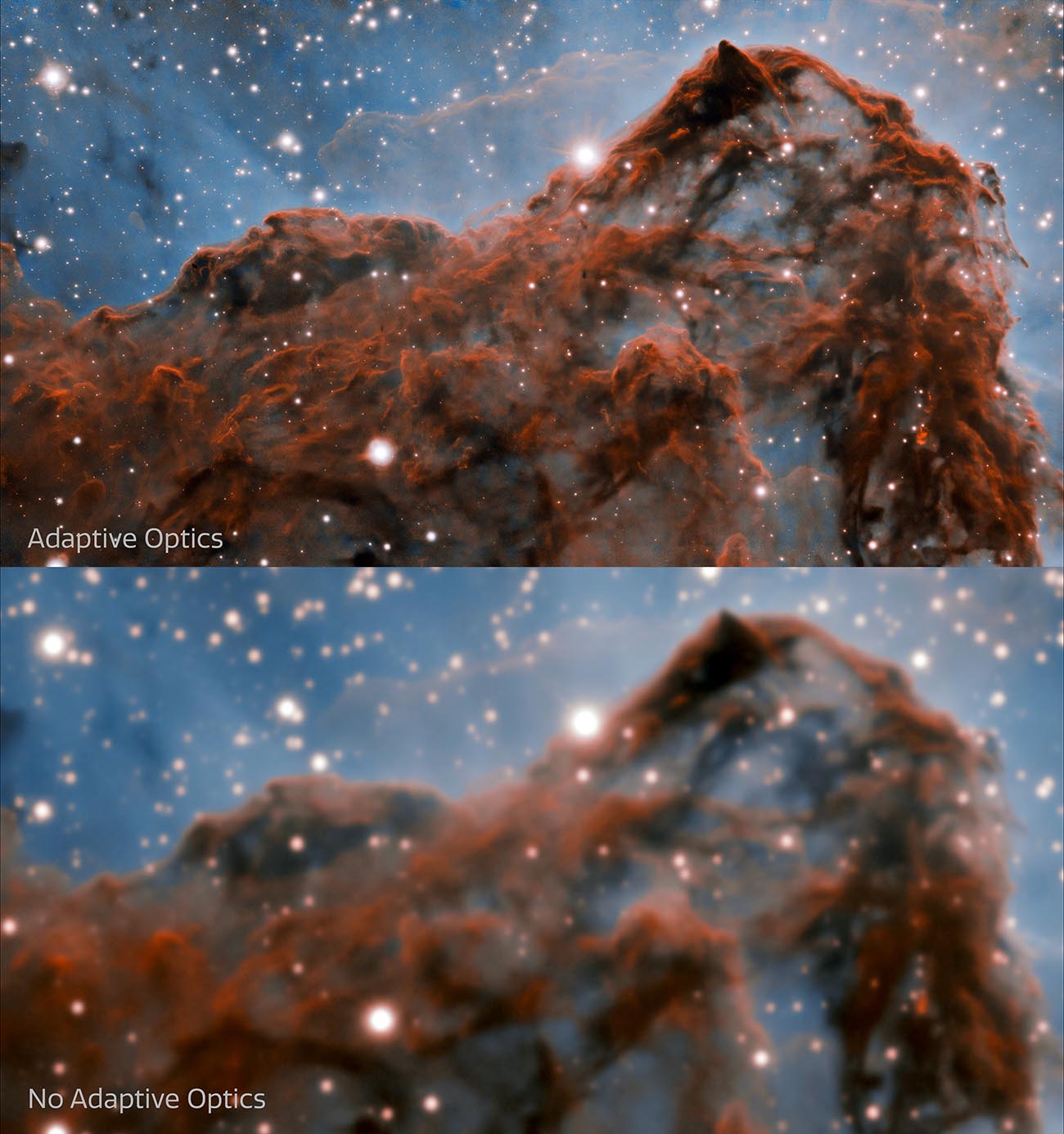NOIRLab: Looking Sharp: Most Detailed Image Yet of Famous Stellar Nursery

This image shows a comparison of the new image (top) of the western wall of the Carina Nebula taken by the international Gemini Observatory, a Program of NSF’s NOIRLab, and an image of the same region without Adaptive Optics (bottom). The top image was taken with the Gemini South telescope with the GSAOI instrument using the GeMS adaptive optics system, and the bottom image was taken at the Cerro Tololo Inter-American Observatory with the Víctor M. Blanco 4-meter Telescope using the NEWFIRM instrument. Credit: International Gemini Observatory/CTIO/NOIRLab/NSF/AURA
The Carina Nebula observed in unprecedented detail with adaptive optics
Astronomers using the international Gemini Observatory, a Program of NSF’s NOIRLab, have captured the western wall of the Carina Nebula in unprecedented detail in a compelling image released today. The image reveals a number of unusual structures in the nebula. The exquisite detail revealed in the image is in part due to a technology known as adaptive optics, which resulted in a ten-fold improvement in the sharpness of the research team’s observations.
There is no better location to investigate the birth of stars than nebulae — regions of gas and dust where stars coalesce, heat up and start to glow. The brilliant Carina Nebula, located in the southern hemisphere sky, is 500 times larger in actual area than the better-known Orion Nebula, making it an ideal candidate for investigating star formation.
The team used adaptive optics on the 8.1-meter Gemini South telescope in Chile to significantly improve upon previous observations of the Carina Nebula’s western wall, the well-defined edge of the nebula. Adaptive optics compensates for the effects of turbulence in the Earth’s atmosphere to produce pin-sharp images, comparable to those from a space telescope. Indeed, this image is reminiscent of the famous Hubble Pillars of Creation in the Eagle Nebula.
